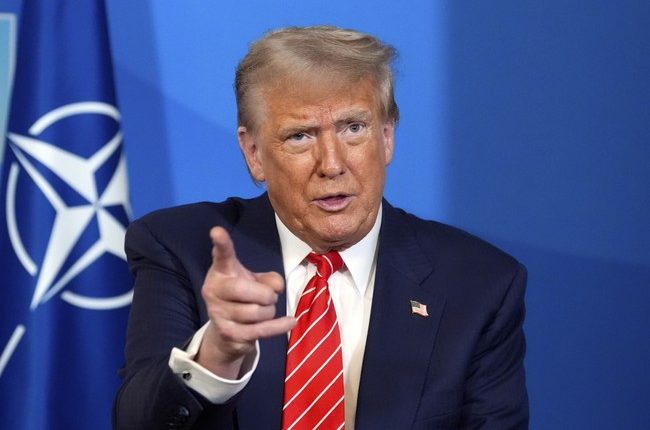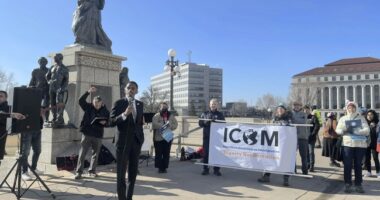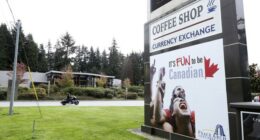
For the last seven days, the Protection Racket Media has deployed what we used to call “modified limited hangouts” to deal with the success of Donald Trump’s strike on Iran’s nuclear facilities. First, they used a leaked and manipulated low-confidence assessment to suggest that the strike on Fordow hadn’t done much damage. Then, media outlets began insisting that the Iranians smuggled their uranium deposits out of Fordow and could still build a nuclear bomb in weeks. After events eclipsed those narratives when even the Iranians began acknowledging the vast damage to their nuclear ambitions, they found ‘experts’ to claim that the nuclear-weapons program only got set back a few months.
That’s the value of modified limited hangouts. You can keep modifying and limiting them!
Case in point: today’s report from the New York Times, which acknowledges now that the three nuclear-development sites at Fordow, Natanz, and Isfahan really did derail Iran’s attempt to produce a nuclear weapon. The Israeli and US attacks on Isfahan destroyed a critical process in the final steps of weaponization, they now acknowledge. And they blame Trump for its existence:
Israeli and American strikes appear to have created a major roadblock to Iran’s manufacture of atomic bombs, even if its cache of uranium fuel remains untouched, analysts say.
That’s because attacks on one of the sites, in Isfahan, shattered gear that Iran was preparing to use for the transformation of enriched uranium gas into dense metal. That process, known as metallization, is among the last steps in making the explosive core of an atomic bomb.
Some nuclear experts argue that the demolished gear might never have existed but for President Trump’s abandoning a restrictive nuclear deal in his first term that President Barack Obama had negotiated.
Mr. Trump and his allies faulted the 2015 Obama deal as preserving Iran’s ability to produce as much nuclear fuel as it wanted after 2030. But some experts see that criticism as ignoring a far more immediate threat. They note that Iran ramped up work at Isfahan only after Mr. Trump canceled the deal, and that now, in effect, he has been forced to neutralize a danger of his own making.
Er … what? The Iranians have hidden their work at Isfahan for at least two decades prior to the 12 Day War and its destruction. In May 2013, then-president Hassan Rouhani openly bragged about how the regime suckered the Europeans and the US into overlooking the clandestine expansion of operations at that facility. They used the negotiations as a cover to ensure the completion of the weaponization phases at that time, including heavy-water operations at Arak and the cascades and other operations at Isfagan which enriched uranium far past the point of peaceful civilian use:
Even the NYT itself covered the discovery in 2015 that the Iranians had been violating their agreed-to limits on enriching uranium. That discovery came to light just weeks before Barack Obama signed the JCPOA that their ‘experts’ claim would have kept Iran from building a weapon, and guess where the violations occurred?
With only one month left before a deadline to complete a nuclear deal with Iran, international inspectors have reported that Tehran’s stockpile of nuclear fuel increased about 20 percent over the last 18 months of negotiations, partially undercutting the Obama administration’s contention that the Iranian program had been “frozen” during that period.
But Western officials and experts cannot quite figure out why. …
The 2013 plan for capping the stockpile relied on Iran’s stated plan to build a “conversion plant” at its sprawling nuclear complex at Isfahan. The plant was intended to turn newly enriched uranium into oxide powder, the first step toward making reactor fuel rods. In other words, while the stockpile would not be reduced, it also should not have grown.
As the Bipartisan Policy Center, a research group in Washington, said in February, “Iran has failed” to do the conversion. As a result, it added, Iran’s stockpile of enriched uranium, compared with when the preliminary accord went into effect, was growing “significantly larger.”
Obama signed the JCPOA anyway, ignoring the evidence of Iranian intent to produce nuclear weapons.
In this new modified limited hangout, we are supposed to believe that Iran never intended to build a nuke before Trump became president. To back up that assertion, the NYT relies on two sources — the first being a member of the negotiating team that produced the useless JCPOA. The second is a former lobbyist for the American Physical Society, who got bounced out of his job for claiming in December 2016 that Donald Trump would be “the first antiscience president we have ever had.” The NYT notes Robert Einhorn’s connection to the JCPOA but somehow neglects to mention Michael Lubbell’s long-time animus toward Trump.
Only a fool or a malevolent actor would argue that the Iranians stopped planning to build a nuclear weapon after the 2015 JCPOA. They began cheating on it almost immediately, which is what Trump cited when pulling out of the executive agreement in 2018, but offered negotiations for real nuclear disarmament in its place, offers which the Iranians ignored because of increased demands for access and verification of compliance. The Iranians didn’t enrich uranium to 60% and then to 83% for energy development; the only use of uranium at those levels of enrichment are military, period.
Now, however, the modifications and limitations have to deal with the facts on the ground, which the NYT grudgingly acknowledges:
Some early assessments of the war cast the Israeli and American strikes as setting Iran’s nuclear program back only a few months but apparently without specifying which part of its nuclear infrastructure could be quickly rebuilt.
Now, however, nuclear experts say the destruction of Iran’s metallization plants has seemingly ended Tehran’s near-term ability to make a bomb’s explosive core. Rebuilding the crucial sites, they add, will most likely take years.
And a whole lotta money, which the Iranians won’t get under Trump’s “maximum pressure” sanctions. If they do try to rebuild those projects, Trump pledged to strike them again to ensure that the Iranians can’t develop nuclear weapons. As for the existing stores of enriched uranium, it’s likely buried at Fordow, considering (a) the Iranians built it to be the safest repository possible, and (b) the Israelis and the US have watched that facility carefully for years to make sure nothing got moved out.
All of those are wins for nuclear non-proliferation and for those targeted by the radical regime in Tehran. Too bad the Protection Racket Media doesn’t like it when they lose.
Speaking of which, if you want to fight the media’s narratives and support independent voices, you can help us stand up to the mainstream media! Become a VIP member to support Hot Air and access our premium content, and check out our VIP Gold and VIP Platinum levels too. Use the promo code FIGHT to join or to upgrade your existing membership level today, and get 60% off!






